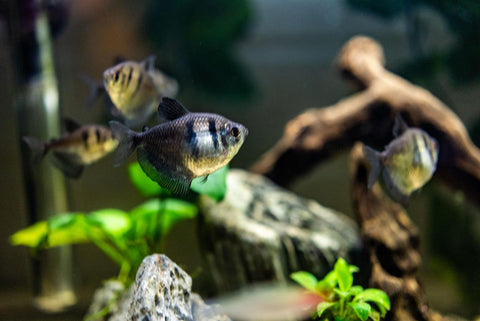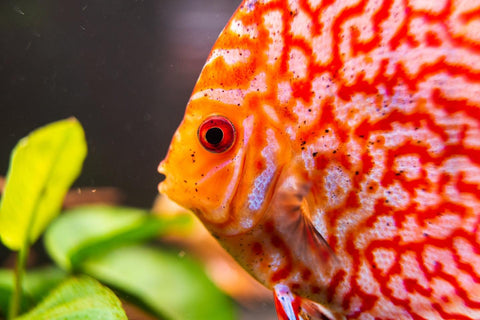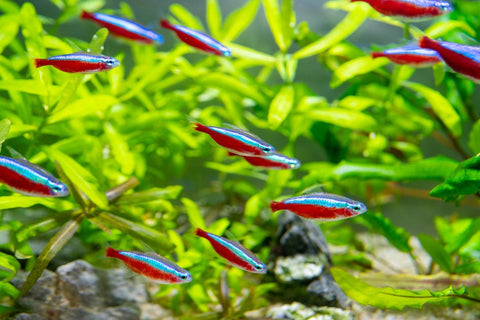The mourning cloak tetra, scientifically known as Gymnocorymbus ternetzi, is a fascinating freshwater fish native to the waters of South America. With its striking appearance and interesting behavior, this tetra is a popular choice for aquarium enthusiasts.
Appearance and characteristics
The mourning cloak tetra is characterized by its elegant physique and striking colouring. It has a slender, laterally flattened body and reaches a length of around 5 to 6 centimetres. The basic color of the body is a dark black, which is contrasted by bright red fins and a white fringe along the edges of the fins. This striking color pattern gives it its name: the mourning cloak tetra.
The fins of the mourning cloak tetra are long and delicate, which gives its appearance a certain elegance. The adipose fin, which sits between the dorsal fin and caudal fin, is particularly pronounced in males and can be used to differentiate between the sexes.
Habitat and behavior
The mourning cloak tetra originates from the clear waters of the rivers and lakes of South America, especially the Amazon basin. In the wild, it lives in large shoals consisting of hundreds of individuals. These shoals offer protection and improve the fish's chances of survival.
In the aquarium, it is important that the mourning cloak tetra is kept in a group of at least six animals. These fish are known for their sociable behavior and can feel safer and more comfortable in a group. To ensure their well-being, the aquarium should be sufficiently planted to provide hiding places.
The mourning cloak tetra is a peaceful fish that can be socialized well with other peaceful species. However, it is important that its tankmates are not too large or have long fins, as the black tetra tends to pick at the fins of other fish.
Care and feeding
Keeping the mourning cloak tetra requires a well-equipped aquarium with clean water and a stable temperature. The water temperature should be between 24 and 28 degrees Celsius and the pH value should be slightly acidic. Regular partial water changes are important to maintain good water quality.
In terms of diet, the black tetra is an omnivore. In the wild, it feeds on small insects, worms and plant material. In the aquarium, it can be fed a mixture of high-quality flake food, live or frozen insect larvae, mosquito larvae and plant food. It is advisable to vary the food to ensure a balanced diet.
When feeding the black tetra, care should be taken to ensure that the food is not too large, as the tetra's mouth is relatively small. It is better to divide the food into smaller portions to ensure that all fish receive enough food.
Breeding
Breeding the mourning cloak tetra can be a rewarding experience. To increase the likelihood of successful breeding, a separate breeding tank should be set up. The water temperature should be slightly increased and the tank should be equipped with fine plants and a dark environment.
The females lay their eggs in small groups, which are then fertilized by the male. After spawning, the parents should be removed as they could eat the eggs. The eggs hatch after around 24 to 48 hours and the fry can be fed with finely ground flake food and Artemia nauplii.
It is important to note that breeding the mourning mantle tetra can be somewhat challenging and requires experience. Some aquarium enthusiasts therefore choose to leave breeding to the experts.
Summary once again
The mourning cloak tetra is a fascinating and attractive fish that is an enrichment for any freshwater aquarium. With its striking appearance and interesting behavior, it is an eye-catcher and offers aquarium enthusiasts an interesting observation opportunity. With the right care and feeding, the mourning cloak tetra can bring many years of joy and beauty to the aquarium.




Comments (0)
There are no comments for this article. Be the first one to leave a message!